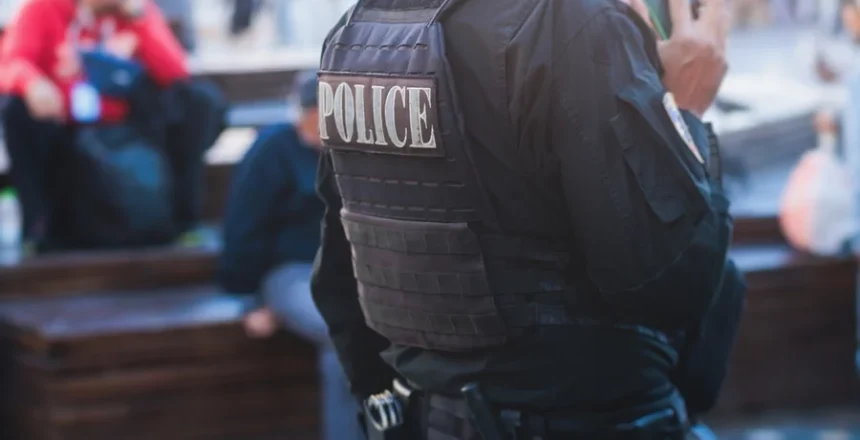TL;DR: When seconds count, disorganized gear costs lives. Efficient law enforcement equipment storage reduces response times, prevents hesitation under pressure, and ensures critical tools are accessible when you need them most. Strategic organization isn’t just convenient—it’s a tactical advantage that keeps you and your community safe.
- Faster access to life-saving medical supplies and defensive tools
- Reduced cognitive load during high-stress situations
- Prevention of equipment damage from poor storage
- Elimination of forgotten gear during shift changes
- Improved confidence and tactical decision-making
When seconds count and lives hang in the balance, you can’t afford to waste time searching for the gear you need. Your equipment isn’t just tools—it’s the difference between controlling a situation and watching it spiral out of control. Whether you’re responding to an active threat or managing a routine traffic stop that suddenly turns dangerous, having immediate access to your gear defines your effectiveness on the job.
The Importance of Efficiency in Law Enforcement
Every officer knows that feeling when adrenaline hits and your hands move on muscle memory alone. You’ve trained for high-stress scenarios, practiced your draw thousands of times, and memorized procedures until they’re second nature. But what happens when you can’t find your tourniquet? When your spare magazines are buried under other gear? When the equipment you desperately need is three steps away instead of within arm’s reach?
Efficiency isn’t about cutting corners or rushing through procedures. It’s about intelligent preparation that allows you to focus on what matters most: the threat in front of you and the people you’re protecting.
When your law enforcement equipment is organized properly, you gain:
- Reduced cognitive load – You’re thinking about tactics and communication, not where your gear is located
- Faster response times – Equipment that’s accessible and ready to deploy saves critical seconds
- Better situational awareness – Less time managing gear means more focus on the threat
The modern law enforcement professional carries an incredible amount of gear. Your duty belt alone holds more equipment than officers carried in their entire patrol cars a generation ago. Add in vehicle equipment, specialized response gear, and backup systems, and you’re managing a small arsenal of tools that need to be instantly accessible in wildly different scenarios.

Essential Police and Law Enforcement Equipment
Personal Protection and Response Gear
Your body armor is your first line of defense, but it’s only as good as your ability to move and respond while wearing it. Modern plate carriers and vests need to accommodate communication devices, tourniquets, and quick-access pouches without creating snag points or restricting your movement. You need security and law enforcement equipment that works with your body, not against it.
Less-lethal options have become critical tools in de-escalation. Your OC spray, baton, and Taser need dedicated positions where you can access them without thinking. In a dynamic situation where you’re making split-second decisions about force levels, fumbling for the right tool isn’t an option. Each piece of equipment should have a consistent home that your hands know instinctively.
Communication and Documentation Tools
Your radio is your lifeline to backup, dispatch, and critical information. It needs to be positioned where you can key the mic without looking, where incoming traffic is clear even in loud environments, and where it won’t get knocked loose during a physical confrontation. The same goes for your body camera—it’s not just recording events for documentation, it’s often your best witness and your strongest defense against false accusations.
Medical Equipment
You’re often the first responder to medical emergencies, and the golden hour isn’t just a guideline—it’s the difference between life and death. Your Individual First Aid Kit (IFAK) should contain tourniquets, chest seals, hemostatic gauze, and pressure bandages positioned where you can reach them with either hand. When you’re treating a gunshot wound or severe trauma, you can’t waste seconds searching through pouches.
Vehicle-Based Systems
Your patrol car functions as a mobile command center, evidence storage, and equipment locker all in one. New law enforcement equipment continues to expand what officers can accomplish in the field, but only if it’s organized properly. Rifles, shotguns, breaching tools, traffic control devices, and investigation supplies all need designated positions that keep them secure during high-speed responses while remaining instantly accessible when needed.
The challenge with law enforcement vehicle equipment is balancing security with accessibility. Your long guns need to be locked but deployable in seconds. Evidence needs to be secured and documented. Equipment for specialized calls needs to be ready without cluttering your workspace. A well-organized vehicle isn’t just convenient—it’s a tactical advantage.
Specialized Response Equipment
Not every call requires specialized gear, but when it does, you need it immediately. Whether it’s breaching tools, riot shields, gas masks, or rescue equipment, these items often live in your trunk or back seat until that one critical moment. Disorganized storage means you’re wasting precious time when every second counts, potentially putting yourself and others at greater risk.
The Risks of Not Having the Right Equipment at the Right Time
Let’s talk about what happens when efficiency breaks down.
Scenario one: You respond to a domestic disturbance that escalates into an armed barricade situation. Your patrol rifle is in the trunk, but it’s buried under traffic cones and the equipment bag you threw in there during your last shift. While you’re digging through gear, the situation deteriorates. Backup arrives before you’ve even got your rifle out, and you’re forced to brief them while still trying to get properly equipped.
Scenario two: You’re first on scene at a mass casualty incident. Multiple victims need immediate medical attention, and you’ve got the training and supplies to help them. But your medical gear is scattered across different bags and compartments. You’re spending critical minutes gathering supplies instead of applying tourniquets and chest seals. Those minutes matter—they’re the difference between victims surviving and bleeding out before advanced medical arrives.
The Hidden Costs of Poor Organization
Psychological impact: When you can’t quickly access what you need, doubt creeps in. That split-second of hesitation while you think about where something is can be the opening an aggressor needs. Confidence comes from preparation, and preparation means knowing your equipment for law enforcement is where it needs to be, when it needs to be there.
Forgotten gear: Poor organization increases the likelihood of leaving critical items behind. When equipment isn’t stored systematically, it’s easy to forget items during shift changes or when moving between vehicles. That forgotten spare magazine or missing tourniquet might not seem critical until you need it in a life-or-death moment. Just as schools need well-organized emergency kits ready for crisis situations, first responders need systematic equipment storage that eliminates guesswork.
Equipment damage: When gear shifts around in your trunk during emergency responses, items get crushed, components separate, and expensive equipment breaks. Optics get knocked out of zero, medical supplies get contaminated, and electronic devices fail from repeated impacts. Strategic storage protects your investment and ensures reliability.
Frequently Asked Questions
What tools do police officers have?
Modern officers carry an extensive array of tools that vary by department and assignment. Standard duty belt equipment includes a service weapon, spare magazines, handcuffs, OC spray, baton or impact weapon, Taser, radio, flashlight, and gloves. In vehicles, you’ll typically find rifles or shotguns, additional ammunition, medical supplies, traffic control equipment, investigation tools, and specialized gear for different call types. Detectives and specialized units carry additional equipment specific to their roles.
What ammo do cops use?
Most departments issue 9mm hollow point ammunition for duty pistols, with popular loads including Federal HST, Speer Gold Dot, and Hornady Critical Duty. These rounds are designed for controlled expansion and penetration that meets FBI protocol standards. For patrol rifles, 5.56 NATO or .223 Remington with 55-77 grain projectiles is standard, often in barrier-blind configurations. Shotguns typically use 00 buckshot for defensive applications and slugs for specialized purposes.
What guns do FBI agents carry?
FBI agents primarily carry Glock 9mm pistols, with the Glock 19M (a modified Gen5) being the current standard issue. Agents can also qualify with other 9mm platforms that meet bureau specifications. For long guns, the FBI uses various AR-15 pattern rifles chambered in 5.56 NATO and .308 Winchester for tactical teams. The bureau emphasizes ammunition performance over specific firearm models, focusing on terminal ballistics that meet their penetration and expansion standards.
What gun does the CIA use?
CIA operatives’ equipment varies significantly based on assignment and operational requirements, and specific details about their firearms remain classified for security reasons. Unlike traditional law enforcement, CIA operations officers work in diverse international environments where equipment selection depends on mission parameters, local laws, and cover requirements. They train on various platforms common in both US and international markets to maintain operational flexibility.
Final Thoughts
Your effectiveness as a law enforcement professional depends on more than just training and tactics—it’s built on the foundation of intelligent equipment management. Every second you save through organized storage is a second you can dedicate to assessment, communication, and appropriate response. The best police and law enforcement equipment in the world won’t help you if you can’t access it when it matters most.
Strategic storage solutions transform how you work by eliminating the mental burden of tracking equipment locations. When your gear has dedicated positions and systematic organization, you operate with confidence knowing everything is where it should be. You’re not improvising or hoping you remember where you put something—you know.
Be prepared and be efficient with strategic storage. Get tactical gear you can trust today! Check out the Tac-Tote magnetic G-bag and transform how you organize and access your critical equipment.








